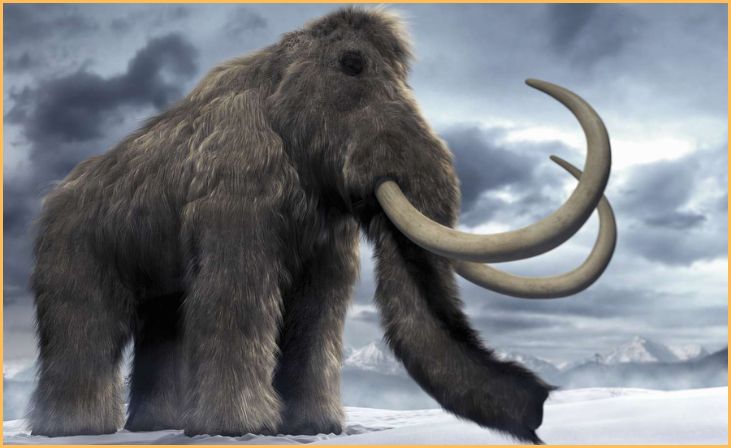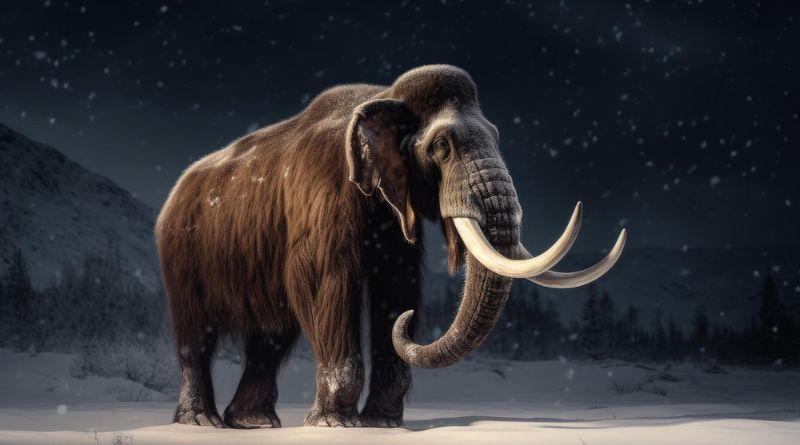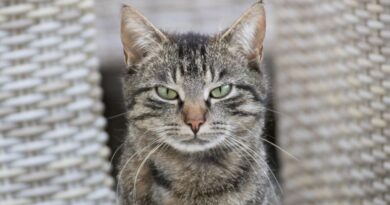Giant North American Ice Age Animals – Embark on a journey through time as we unveil the colossal inhabitants of prehistoric North America. Our blog, “8 Giant North American Ice Age Animals,” delves into the fascinating world of mammoths, sabertooths, and other magnificent creatures that once roamed the icy landscapes.
Journey with us as we unearth the stories behind these awe-inspiring giants, exploring their adaptations, habitats, and the mysteries surrounding their extinction. From the towering mastodons to the swift dire wolves, this exploration promises a thrilling glimpse into an ancient era when these massive beings ruled the continent.
8 Giant North American Ice Age Animals
Mastodons: Giants of the Ancient Forests

The mastodon, a distant relative of modern elephants, stood as a true giant of the ancient North American landscapes during the Ice Age. These massive herbivores boasted long, curved tusks and distinctive, ridged molars suited for grinding vegetation. Roaming the forests in search of shrubs and trees, mastodons were crucial herbivores that shaped the ecosystem. Their fossils have been discovered across North America, unveiling insights into their social structures and migration patterns. The Columbian mammoth, a related species, also left an indelible mark, particularly in the western regions, showcasing the diversity of megafauna during this epoch.
Also Read: Most Exquisite Peacocks in the World
Saber-Toothed Cats: Fearsome Predators of the Tundra
Among the apex predators of the Ice Age were the saber-toothed cats, such as Smilodon. Known for their iconic elongated canine teeth, these feline predators adapted to the cold tundra environments across North America. Their robust build, powerful limbs, and serrated teeth made them formidable hunters, preying on large herbivores like bison and camels. Fossil evidence suggests that these cats were social creatures, engaging in complex behaviors and hunting strategies. The saber-toothed cats, with their distinct adaptations, played a crucial role in maintaining ecological balance within the Ice Age ecosystems.
Glyptodons: Armored Tanks of the Ice Age
Imagine a massive, tank-like creature with a protective shell roaming the Ice Age landscapes – that’s the glyptodon. These herbivorous giants, resembling oversized armadillos, were equipped with bony plates covering their bodies, providing formidable protection against predators. Glyptodons primarily grazed on vegetation, and their fossils have been discovered in areas ranging from the southern United States to South America. The unique armor and size of glyptodons exemplify the diverse adaptations that allowed creatures to thrive in the challenging conditions of the Ice Age.
Giant Short-Faced Bears: Kings of the Ancient Plains

The giant short-faced bear, Arctodus simus, was one of the largest terrestrial mammals of the Ice Age. Towering over modern bears, it exhibited a unique adaptation with long limbs and a shortened face, enabling it to cover large distances in pursuit of prey. These omnivorous giants likely scavenged, hunted, and competed with other apex predators for resources. Fossil evidence indicates their presence across North America, emphasizing their adaptability to a range of environments. The giant short-faced bear remains an intriguing enigma in the study of Ice Age megafauna and the ecological interactions that shaped ancient ecosystems.
Dire Wolves: Swift Predators of the Ice Age
Enter the dire wolf, Canis dirus, a formidable predator that once roamed the Ice Age landscapes in packs. These wolves were slightly larger and more robust than their modern counterparts, with powerful jaws and teeth adapted for hunting large prey. Dire wolves likely played a key role in preying on herbivores like bison and horses, contributing to the intricate web of predator-prey relationships. Fossil evidence indicates their widespread distribution across North America, showcasing their adaptability to various habitats and climates during the Pleistocene epoch.
Giant Ground Sloths: Browsers of the Ice Age Forests
Picture a colossal ground sloth, towering over trees as it grazes on vegetation. These herbivores, like Megalonyx and Eremotherium, were among the largest mammals of the Ice Age. With massive claws and powerful limbs, they adapted to both browsing on trees and grazing on the ground. Fossil discoveries indicate their presence in regions ranging from the southern United States to South America, showcasing their versatility in different environments. Giant ground sloths played a vital role in shaping the vegetation and ecosystems of the ancient forests they inhabited.
American Lions: Apex Predators of the Pleistocene
The American lion, Panthera leo atrox, was a formidable apex predator that ruled the Ice Age plains of North America. Larger than its contemporary African relatives, this big cat was a powerful hunter preying on a variety of megafauna. Fossil evidence suggests that these lions had a wide distribution across North America, from Alaska to Mexico. The extinction of the American lion remains a subject of scientific inquiry, with climate change and human activities likely contributing to the decline of this majestic predator.
Also Read: Best Lizard Pets for Beginners
Camels: Ice Age Survivors of North America

Contrary to common perceptions, camels were once native to North America, and during the Ice Age, they included large, robust species. These North American camels, such as Camelops, adapted to diverse environments, from grasslands to woodlands. With their unique physiological traits, including a specialized dentition for browsing, these camels were well-suited to the challenges posed by the Pleistocene epoch. The fossil record indicates their widespread presence, and studying these Ice Age camels provides valuable insights into the evolutionary history of this iconic group of mammals.
Conclusion
Our exploration of the “8 Giant North American Ice Age Animals” reveals a mesmerizing chapter in Earth’s history. These colossal beings, sculpted by evolution, left an indelible mark on the landscapes they traversed. As we reflect on their existence, it’s a testament to the resilience and diversity of life in the face of environmental challenges. Join us in celebrating the legacy of these magnificent creatures, and let their stories inspire a deeper appreciation for the wonders that once roamed the frozen expanses of North America.
FAQs
The mammoth takes the spotlight as one of the most iconic creatures, with the Columbian mammoth being the largest of its kind in North America.
These creatures developed unique adaptations, such as thick fur, large tusks, and specialized teeth, enabling them to thrive in the cold climates of the Ice Age.







